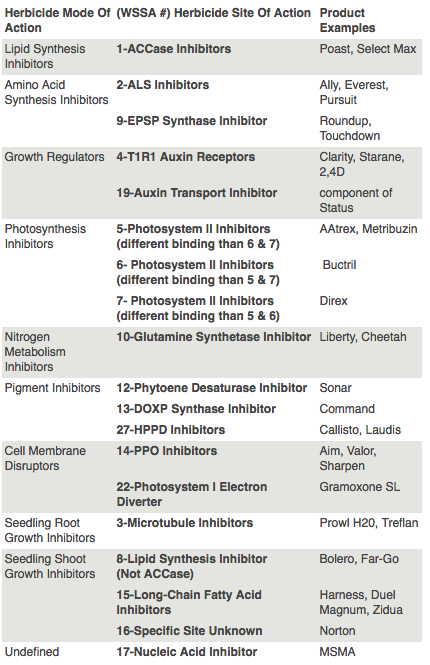By Gared Shaffer
Herbicides are chemicals that prevent or stop normal plant growth and development. These chemicals provide producers cost effective control of many weed species in crop, hay and pasture operations. However, improper application or over use of herbicides may result in crop injury, poor weed control, herbicide resistant weeds, environmental contamination, or health risks.
Mode of Action (MOA)
All herbicide interactions with the plant, from application to final effect, are considered the mode of action. The mode of action involves absorption into the plant, translocation or movement in the plant, metabolism of the herbicide, and the physiological plant response.
Site of Action (SOA)
Herbicide Site of Action is the specific process in plants that the herbicide disrupts to interfere with plant growth and development. The SOA is the most important aspect of herbicides when dealing with prevention and control of herbicide resistant weeds.
The National Weed Science Society has numbered each group of herbicides under the same MOA and SOA for ease of reference when planning your herbicide program (Table 1).
Resistance Management

As you can see from the table, there are 10 modes of action but only 8 of those are widely used, which in turn limits the available sites of action.
There are over 700 registered herbicide products in South Dakota. Those products use 8 modes of action with 18 sites of action. Weed species that are resistant to three different sites of action: (SOA 1) ACCase, (SOA 2) ALS Inhibitors, and (SOA 9) EPSP Synthase Inhibitor (International Survey of Herbicide Resistant Weeds), are present in South Dakota. More cases of resistance could be present, but not yet documented.
To slow weed resistance, make sure to rotate herbicide sites of action within different modes of action as much as possible. If you have suspected resistance on your land, please contact SDSU Extension so the proper measures can be taken.





